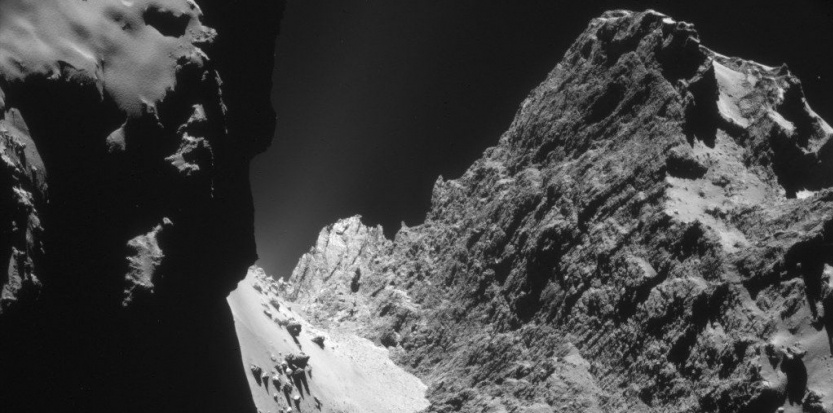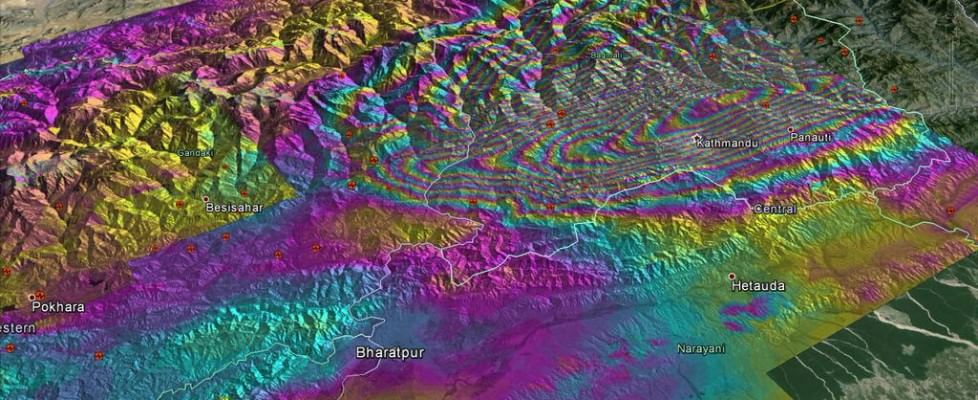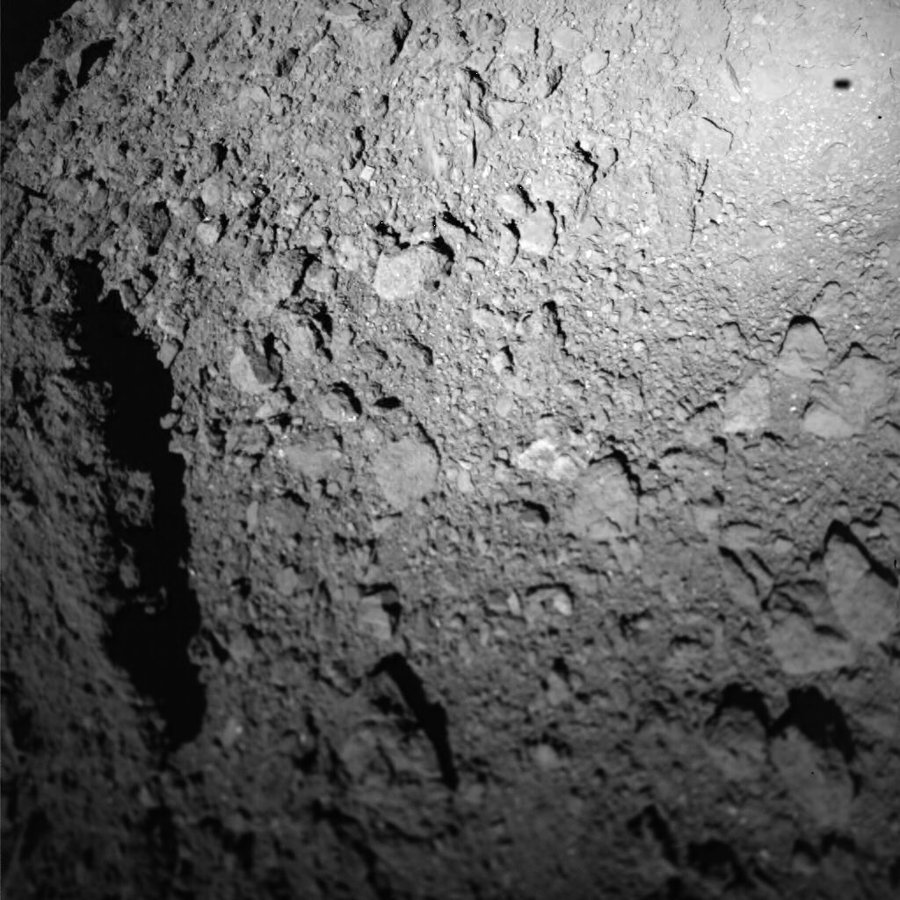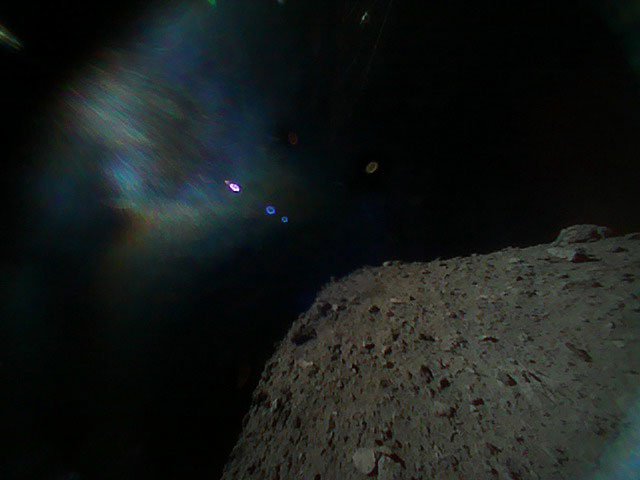Décollage de la navette le 12/01.1986. La photo est ,'est pas récente mais tellement belle !

 Re: L'espace par l'image
Re: L'espace par l'image
 Re: L'espace par l'image
Re: L'espace par l'image
Photographie prise le 13 décembre 2014. Le Rover est dans un cadre au centre de l'image avec son ombre dirigée vers le coin supérieur droit. Extraordinaire tout de même de pouvoir obtenir ce type de photographie. Non ?
http://www.nasa.gov/jpl/mro/pia19114/#.VNYf8izmlhqCuriosity Rover at 'Pahrump Hills'
NASA's Curiosity Mars rover can be seen at the "Pahrump Hills" area of Gale Crater in this view from the High Resolution Imaging Science Experiment (HiRISE) camera on NASA's Mars Reconnaissance Orbiter. Pahrump Hills is an outcrop at the base of Mount Sharp. The region contains sedimentary rocks that scientists believe formed in the presence of water.
The location of the rover, with its shadow extending toward the upper right, is indicated with an inscribed rectangle. Figure A is an unannotated version of the image. North is toward the top. The view covers an area about 360 yards (330 meters) across.
HiRISE made the observation on Dec. 13, 2014. At that time, Curiosity was near a feature called "Whale Rock." A map showing the rover's path for the weeks leading up to that date is at http://mars.jpl.nasa.gov/msl/multimedia/images/?ImageID=6884 . The inset map at http://mars.jpl.nasa.gov/msl/multimedia/images/?ImageID=6913 labels the location of Whale Rock and other features in the Pahrump Hills area.
The bright features in the landscape are sedimentary rock and the dark areas are sand. The HiRISE team plans to periodically image Curiosity, as well as NASA's other active Mars rover, Opportunity, as the vehicles continue to explore Mars.
This image is an excerpt from HiRISE observation ESP_039280_1755. Other image products from this observation are available at http://hirise.lpl.arizona.edu/ESP_039280_1755 .
The University of Arizona, Tucson, operates HiRISE, which was built by Ball Aerospace & Technologies Corp., Boulder, Colorado. NASA's Jet Propulsion Laboratory, a division of the California Institute of Technology in Pasadena, manages the Mars Reconnaissance Orbiter Project and Mars Science Laboratory Project for NASA's Science Mission Directorate, Washington.
Image Credit: NASA/JPL-Caltech/Univ. of Arizona
 Re: L'espace par l'image
Re: L'espace par l'image
 Re: L'espace par l'image
Re: L'espace par l'image
 Re: L'espace par l'image
Re: L'espace par l'image Re: L'espace par l'image
Re: L'espace par l'image
 Re: L'espace par l'image
Re: L'espace par l'image
Ceres Seen From NASA's Dawn Spacecraft
NASA's Dawn spacecraft has become the first mission to achieve orbit around a dwarf planet. The spacecraft was approximately 38,000 miles (61,000) kilometers from Ceres when it was captured by the dwarf planet’s gravity at about 4:39 a.m. PST (7:39 a.m. EST) Friday, March 6.
This image of Ceres was taken by the Dawn spacecraft on March 1, just a few days before the mission achieved orbit around the previously unexplored world. The image shows Ceres as a crescent, mostly in shadow because the spacecraft's trajectory put it on a side of Ceres that faces away from the sun until mid-April. When Dawn emerges from Ceres' dark side, it will deliver ever-sharper images as it spirals to lower orbits around the planet.
The image was obtained at a distance of about 30,000 miles (about 48,000 kilometers) at a sun-Ceres-spacecraft angle, or phase angle, of 123 degrees. Image scale on Ceres is 1.9 miles (2.9 kilometers) per pixel. Ceres has an average diameter of about 590 miles (950 kilometers).
Dawn's mission is managed by NASA's Jet Propulsion Laboratory, Pasadena, California, for NASA's Science Mission Directorate in Washington. Dawn is a project of the directorate's Discovery Program, managed by NASA's Marshall Space Flight Center in Huntsville, Alabama. The University of California, Los Angeles, is responsible for overall Dawn mission science. Orbital ATK Inc., in Dulles, Virginia, designed and built the spacecraft. The German Aerospace Center, the Max Planck Institute for Solar System Research, the Italian Space Agency and the Italian National Astrophysical Institute are international partners on the mission team. For a complete list of acknowledgments, http://dawn.jpl.nasa.gov/mission.

 Re: L'espace par l'image
Re: L'espace par l'image


 The European Space Agency’s Sentinel mission has completed its inaugural year.
The European Space Agency’s Sentinel mission has completed its inaugural year. 
 Re: L'espace par l'image
Re: L'espace par l'imageJ'aurais dû copier l'image :Laurent Simon a écrit:Comment Rosetta prend de sublimes clichés avec de vieux appareils photo
http://tempsreel.nouvelobs.com/photo/20150227.OBS3529/comment-rosetta-prend-de-sublimes-cliches-avec-de-vieux-appareils-photo.html


 Une des permières photos prises par Sentinel1A, sur le tremblement de terre Napa Valley
Une des permières photos prises par Sentinel1A, sur le tremblement de terre Napa Valley




 Comment 3 scans radar de Sentinel 1A peuvent être utilisés pour visualiser les cultures
Comment 3 scans radar de Sentinel 1A peuvent être utilisés pour visualiser les cultures
This image combines three radar scans from the Sentinel-1A satellite in October and December 2014.
Focusing on the right side of the image, we can see how different colors represent changes between the acquisitions in the agricultural structures, due to plant growth or harvest.

 Sentinel 1A, observe le Népal (séisme)
Sentinel 1A, observe le Népal (séisme)

 Pluton, des images inédites. New Horizons.
Pluton, des images inédites. New Horizons.

 Re: L'espace par l'image
Re: L'espace par l'image
Three of Saturn's moons -- Tethys, Enceladus and Mimas -- are captured in this group photo from NASA's Cassini spacecraft.
Tethys (660 miles or 1,062 kilometers across) appears above the rings, while Enceladus (313 miles or 504 kilometers across) sits just below center. Mimas (246 miles or 396 kilometers across) hangs below and to the left of Enceladus.
This view looks toward the sunlit side of the rings from about 0.4 degrees above the ring plane. The image was taken in visible light with the Cassini spacecraft narrow-angle camera on Dec. 3, 2015.
The view was acquired at a distance of approximately 837,000 miles (1.35 million kilometers) from Enceladus, with an image scale of 5 miles (8 kilometers) per pixel. Tethys was approximately 1.2 million miles (1.9 million kilometers) away with an image scale of 7 miles (11 kilometers) per pixel. Mimas was approximately 1.1 million miles (1.7 million kilometers) away with an image scale of 6 miles (10 kilometers) per pixel.
The Cassini mission is a cooperative project of NASA, ESA (the European Space Agency) and the Italian Space Agency. The Jet Propulsion Laboratory, a division of the California Institute of Technology in Pasadena, manages the mission for NASA's Science Mission Directorate, Washington. The Cassini orbiter and its two onboard cameras were designed, developed and assembled at JPL. The imaging operations center is based at the Space Science Institute in Boulder, Colorado.
For more information about the Cassini-Huygens mission visit http://saturn.jpl.nasa.gov and http://www.nasa.gov/cassini . The Cassini imaging team homepage is at http://ciclops.org .
 Re: L'espace par l'image
Re: L'espace par l'image
A sinuous feature snakes northward from Enceladus' south pole like a giant tentacle. This feature, which stretches from the terminator near center, toward upper left, is actually tectonic in nature, created by stresses in Enceladus' icy shell.
Geologists call features like these on Enceladus (313 miles or 504 kilometers across) "Y-shaped discontinuities." These are thought to arise when surface material attempts to push northward, compressing or displacing existing ice along the way. Such features are also believed to be relatively young based on their lack of impact craters -- a reminder of how surprisingly geologically active Enceladus is.
This view looks towards the trailing hemisphere of Enceladus. North is up. The image was taken in visible green light with the Cassini spacecraft narrow-angle camera on Feb. 15, 2016.
The view was obtained at a distance of approximately 60,000 miles (100,000 kilometers) from Enceladus. Image scale is 1,900 feet (580 meters) per pixel.
 Re: L'espace par l'image
Re: L'espace par l'image
A new study published in the Astrophysical Journal uses data from NASA's Spitzer Space Telescope and four ground-based telescopes to determine the distance from a star to the inner rim of its surrounding protoplanetary disk. Researchers used a method called "photo-reverberation," also known as "light echoes." When the central star brightens, some of the light hits the surrounding disk, causing a delayed “echo.” Scientists measured the time it took for light coming directly from the star to reach Earth, then waited for its echo to arrive.
The Spitzer study marks the first time the light echo method was used in the context of protoplanetary disks.
This illustration shows a star surrounded by a protoplanetary disk. Material from the thick disk flows along the star’s magnetic field lines and is deposited onto the star’s surface. When material hits the star, it lights up brightly.
 Re: L'espace par l'image
Re: L'espace par l'image
The Nili Fossae region, located on the northwest rim of Isidis impact basin, is one of the most colorful regions of Mars. The colors over many regions of Mars are homogenized by the dust and regolith, but here the bedrock is very well exposed, except where there are sand dunes. The rocks also have diverse compositions. This region is ancient and has had a complicated geologic history, leading to interesting structures like layered bedrock, as well as other compositions.
This image of Nili Fossae was taken on Feb. 5, 2016, at 14:54 local Mars time by the High Resolution Imaging Science Experiment (HiRISE) camera on NASA's Mars Reconnaissance Orbiter. The University of Arizona, Tucson, operates HiRISE, which was built by Ball Aerospace & Technologies Corp., Boulder, Colo. NASA's Jet Propulsion Laboratory, a division of the California Institute of Technology in Pasadena, manages the Mars Reconnaissance Orbiter Project for NASA's Science Mission Directorate, Washington.
Image Credit: NASA/JPL-Caltech/Univ. of Arizona
Caption: Alfred McEwen

 Re: L'espace par l'image
Re: L'espace par l'image
 Re: L'espace par l'image
Re: L'espace par l'image
 Re: L'espace par l'image
Re: L'espace par l'image



 Re: L'espace par l'image
Re: L'espace par l'image


 Re: L'espace par l'image
Re: L'espace par l'image